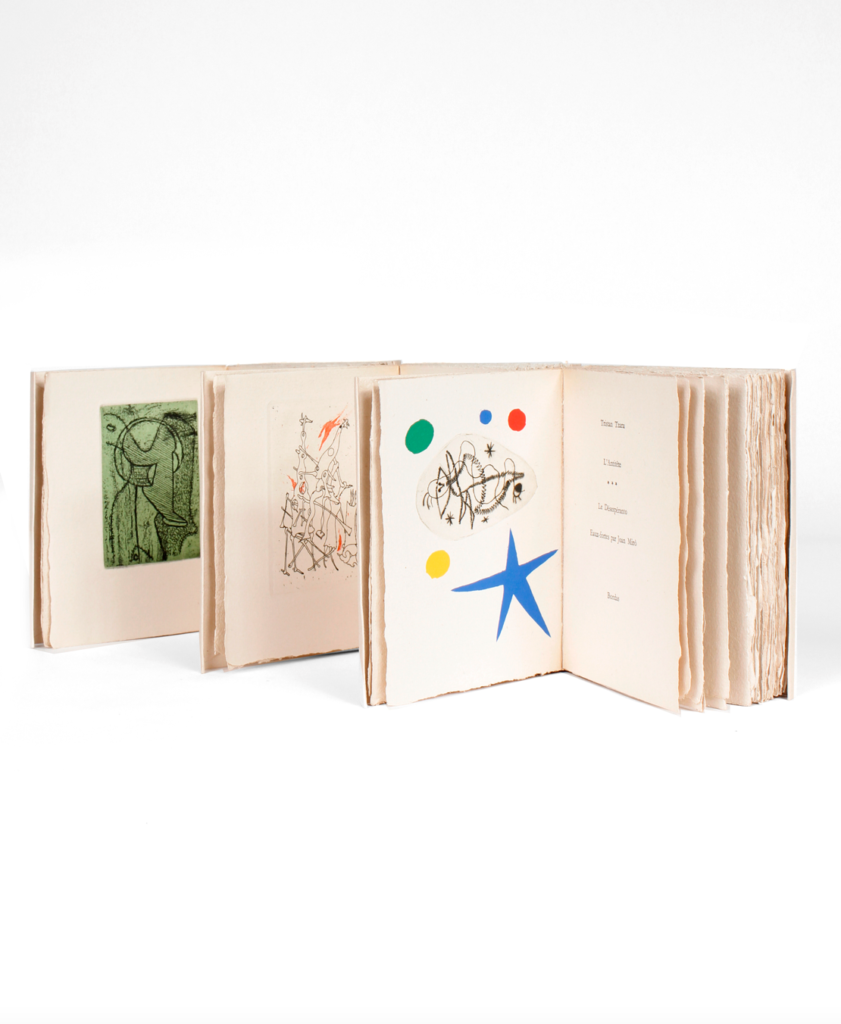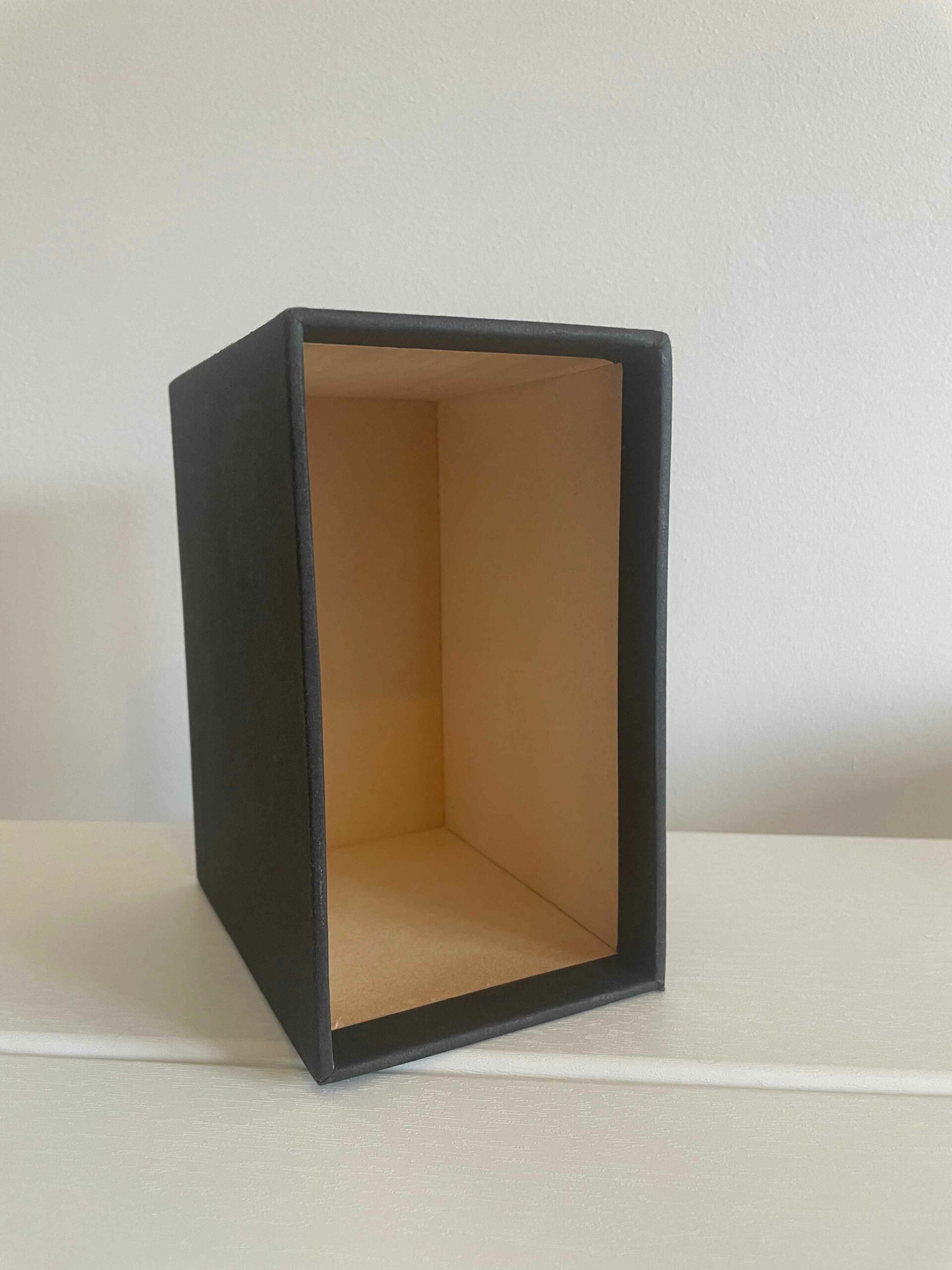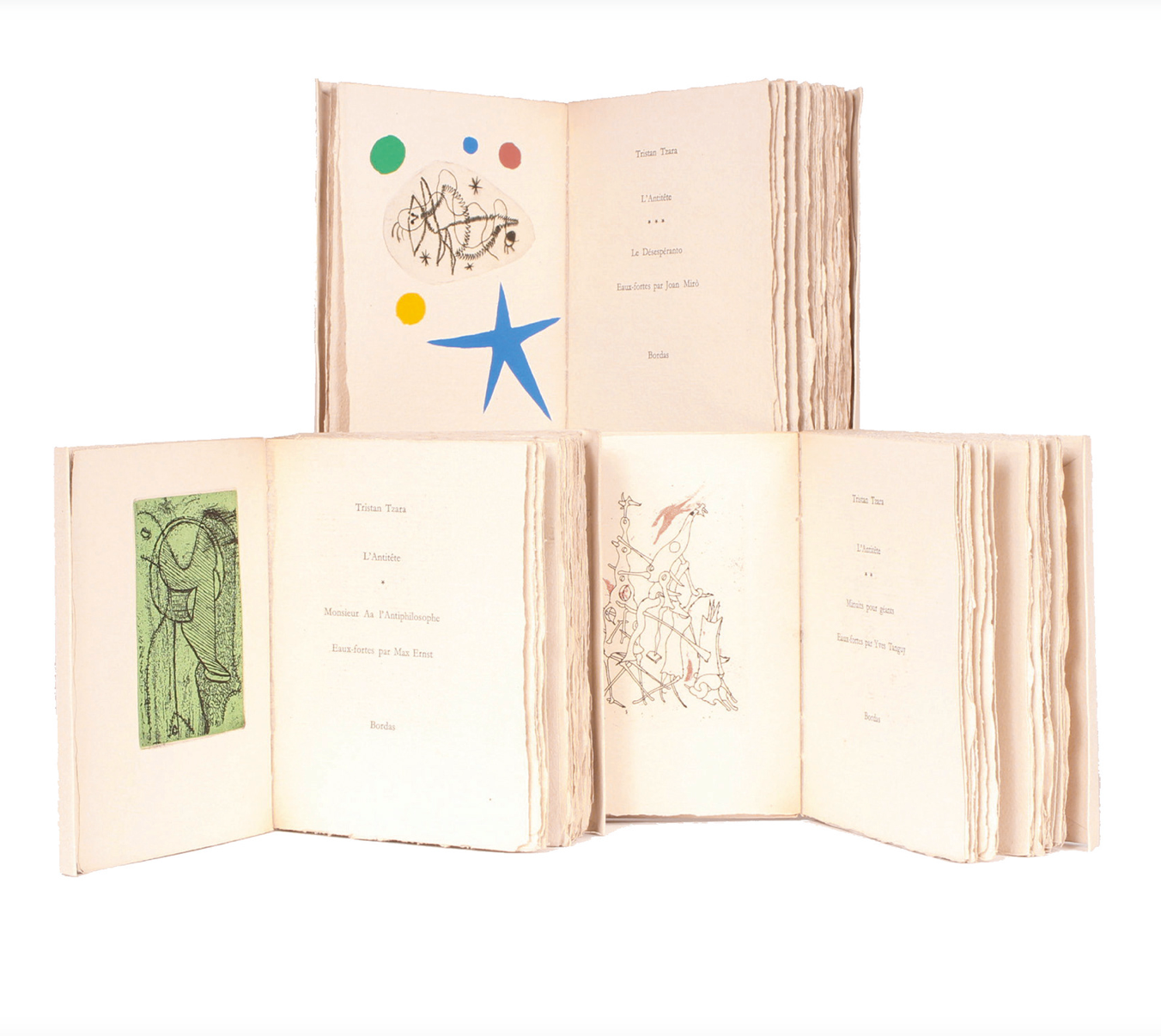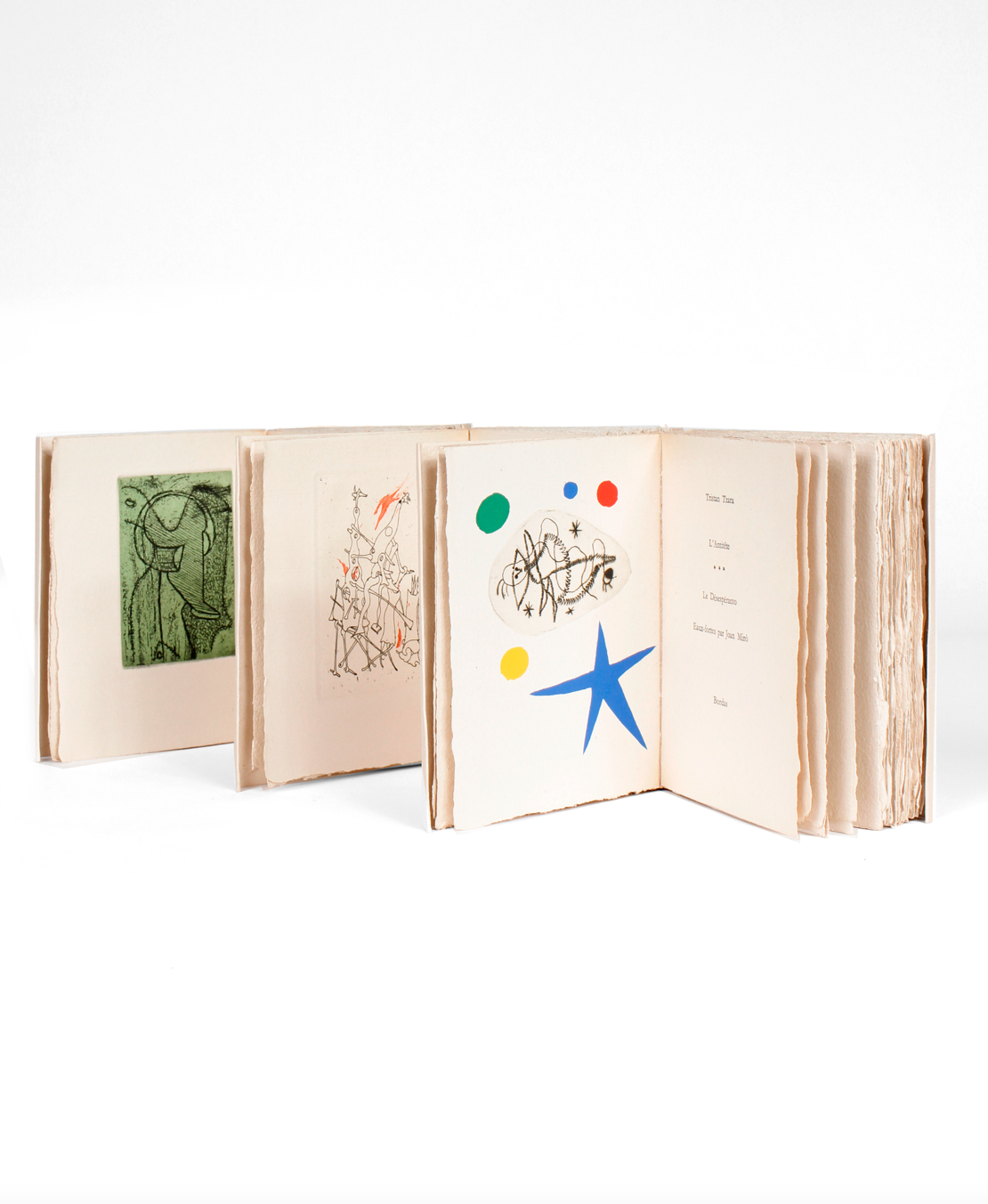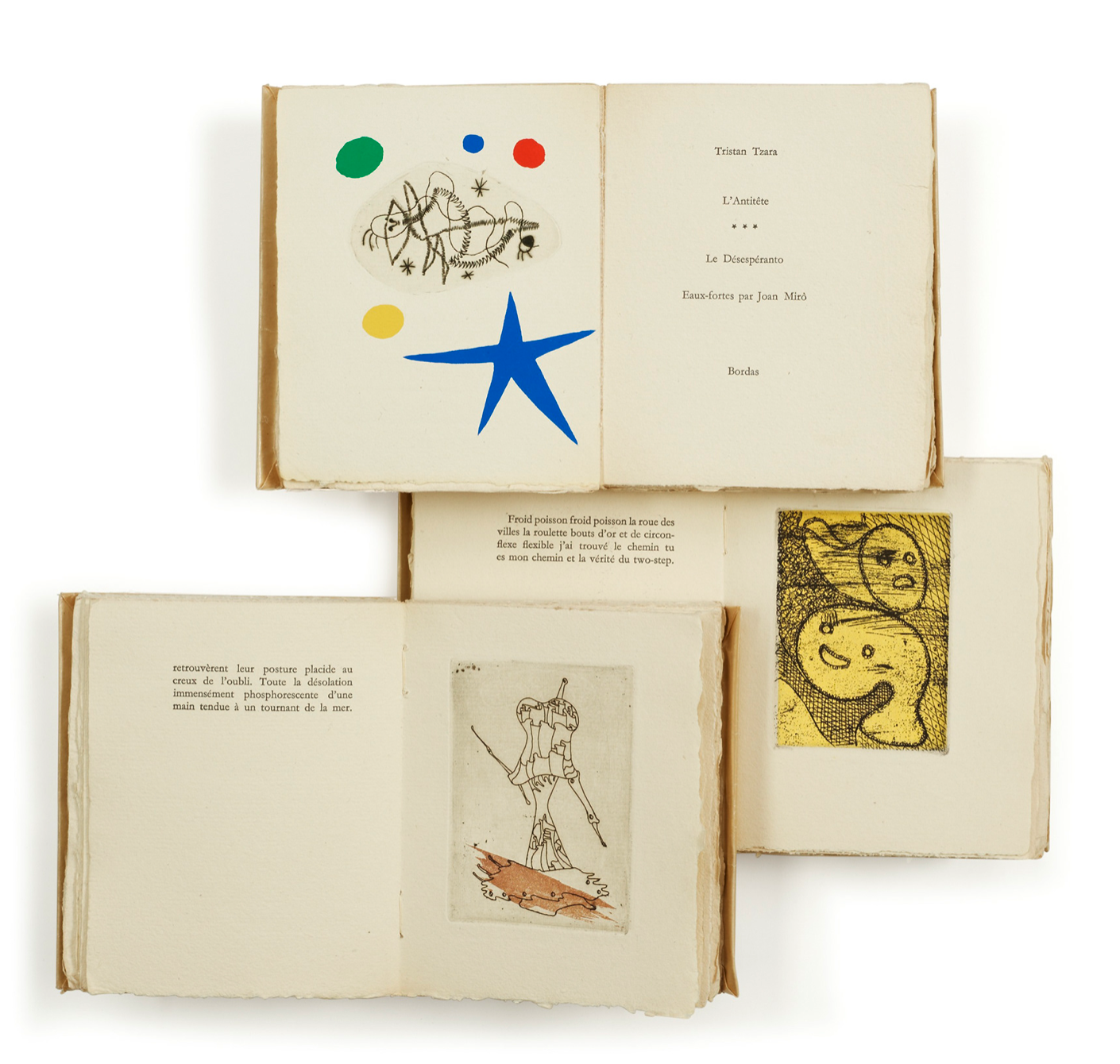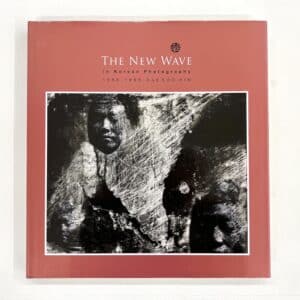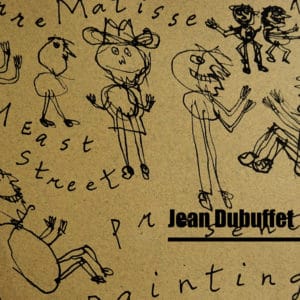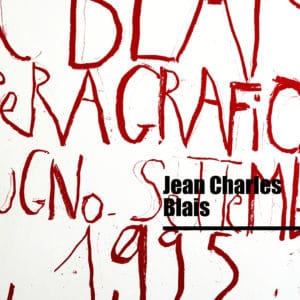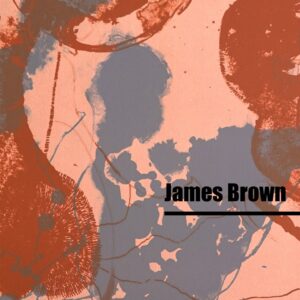First edition illustrated with 23 original etchings and aquatints, hors texte, in color.
One of 169 copies on Auvergne watermarked (n° 186), signed by the publisher and by each illustrator (Ernst, Miro and Tanguy) in their respective volumes. The volumes do not have the parchment covers, which can be found on some of the copies.
The first pages of the Antitête were written in 1916 and the last ones in 1932. In 1916 in Zurich, Tzara found the name to designate what was to become the Dada Movement. Very quickly, the double syllable seemed to him to be threatened by literary intentions. He shook it. The consonants fell out. Dada. A. a. That’s how is born Mr. Aa, the anti-philosopher, the opposite of professional metaphysicians who pretend to go from a to z, offer the alpha and the omega. (René Crevel, L’Antitête, Feuillets éparses, Louis Broder, 1965, pp. 64-66). Tristan Tzara published fifty-four books between 1916 (La Première aventure céleste de M.Antipyrine) and 1963, the year of his death. Twenty-three artists illustrated his books, including Hans Arp, Sonia Delaunay, Louis Marcoussis, Henri Matisse, Pablo Picasso, Yves Tanguy, Joan Miró and Max Ernst. L’Antitête is an immense twelve-months-long project in which Tristan Tzara collaborates with Tanguy, Miró and Ernst to create this masterpiece of the modern illustrated book.
During the war years, Miró’s fame continued to grow in the United States. At the end of the war, he received a commission that required him to travel to New York. During his stay, he had an opportunity to discover the famous Atelier 17 of Stanley William Hayter who inspired Miró to work in the techniques of etching, aquatint, gravure au sucre and soft varnish. It was in Hayter’s studio where Miró engraved and designed his illustrations for L’Antitête, whose engravings were printed at Roger Lacourière’s printing house in Paris in 1948. (Dupin, Miró graveur, tome I, 1928-1960, Daniel Lelong éditeur, 1984, n° 53 ; Malet-Cramer 20.)

